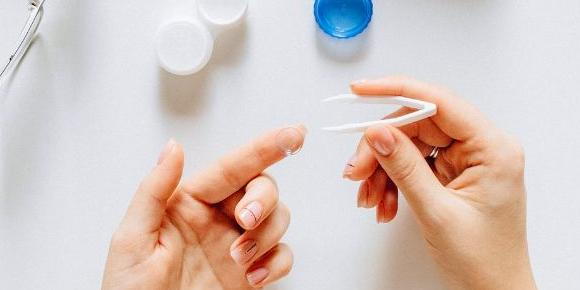
Types of Contact Lenses: A Complete Guide for Vision Correction and Eye Health
Contact lenses are thin, curved pieces of plastic that are placed on the surface of the eye to correct vision problems (refractive errors). Contact lenses can also enhance or change the appearance of the eye with different colors or designs. There are many types of contact lenses available, each with their own advantages and disadvantages. Choosing the right contact lenses for your eyes depends on several factors, such as your vision problem, lifestyle, comfort, and budget. In this article, we will explain the different types of contact lenses, how to choose them, how to care for them, and how to wear them safely and comfortably.
Soft Contact Lenses
Soft contact lenses are made of soft, flexible plastics (such as silicone hydrogel) that allow oxygen to pass through to the cornea. Soft contact lenses may be easier to adjust to and are more comfortable than hard contact lenses. Newer soft lens materials provide more oxygen to your eye while you wear your lenses, which can improve your eye health and comfort.
There are many types of soft contact lenses available. The most common ones include:
Daily disposable contact lenses
These are worn for one day and then thrown away. You do not have to clean or disinfect them. They are convenient, safe, and cost-effective if you do not wear contacts every day. They are also great for eye allergy sufferers since they reduce the potential for allergen build-up on the lenses.
Weekly/monthly disposable contact lenses
These are worn for a week or a month and then replaced with a new pair. You have to clean and disinfect them every night or as instructed by your eye doctor. They are more affordable than daily disposable contacts if you wear contacts every day. They also offer more variety in terms of colors and designs.
Extended-wear contact lenses
These are worn continuously for up to 30 days and nights without removing them. They are made of highly breathable materials that allow more oxygen to reach your eyes. They are convenient for people who do not want to bother with daily cleaning and insertion. However, they also increase the risk of eye infections and complications if you do not follow proper hygiene and care instructions.
Hard Contact Lenses
Hard contact lenses are more durable and resistant to deposit buildup than soft contact lenses. They also provide sharper vision and can correct some vision problems better than soft contact lenses. However, they are not as comfortable initially as soft contacts and it may take a few weeks to get used to wearing them.
Hard contact lenses include two types of lens material:
PMMA (conventional) lenses
These are made of a rigid plastic that does not allow any oxygen to pass through to the eye. They are rarely used today because they can cause hypoxia (lack of oxygen) in the eye, which can lead to corneal swelling and damage.
RGP (rigid gas permeable) lenses
These are made of a slightly flexible plastic that allows some oxygen to pass through to the eye. They are more comfortable and healthier than PMMA lenses. They also provide better vision quality and stability than soft lenses.
Hard contact lenses are not disposable and can last for years if you take good care of them. You have to clean and disinfect them every night or as instructed by your eye doctor.
Conclusion
You should consult with your eye doctor to get a prescription and a proper fitting for your contact lenses. You should also care for your contact lenses properly and wear them safely and comfortably.
If you are interested in trying contact lenses or switching to a different type of lens, contact us today to schedule an appointment with our experienced and friendly eye doctors. We will help you find the best contact lenses for your eyes and provide you with the best service and care. Don't wait any longer, improve your vision and eye health with contact lenses today!


